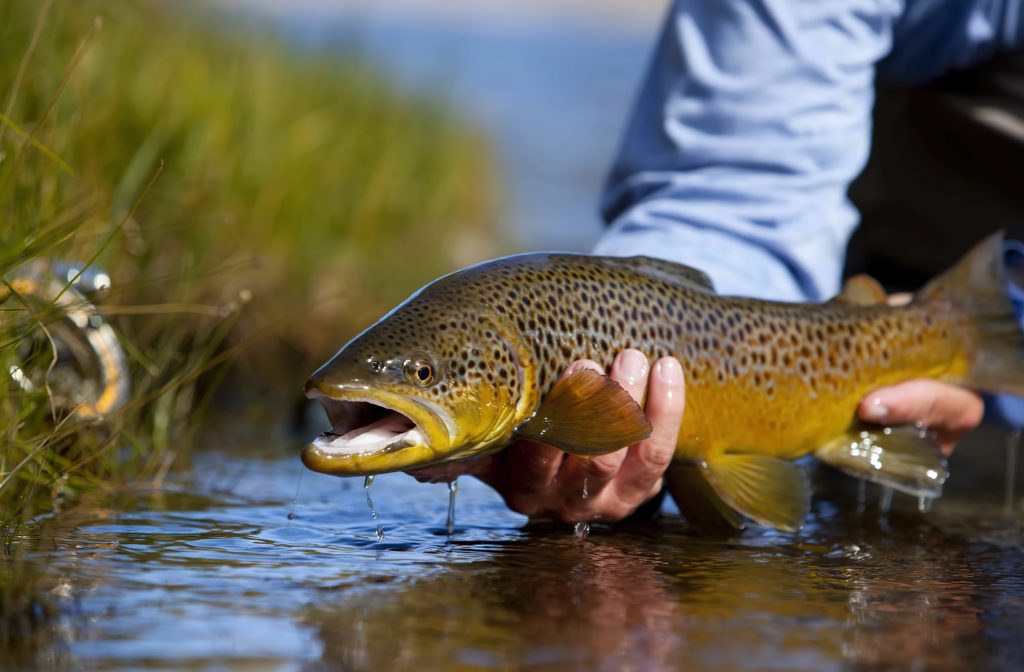Brown trout are a prized catch for many anglers due to their elusive nature and challenging behavior. Here are some tips and techniques to help you catch more brown trout on your next fishing trip.
Finding Brown Trout
When it comes to finding brown trout, it’s all about understanding their preferred habitats. In this article, we’ll explore tips and techniques for locating brown trout in freshwater environments. From understanding their habitat preferences to finding the best fishing spots, you’ll learn everything you need to know to make your next brown trout fishing trip a success.
Baits for Brown Trout
When targeting brown trout, it’s essential to choose the right bait. Brown trout are opportunistic feeders and will eat various prey like insects, crayfish, and small fish. For live bait, using worms, crickets, or small minnows can be effective. On the other hand, artificial lures like small spinners, jigs, or crankbaits in natural colors such as brown, green, and gold can also work well. When selecting bait or lures, make sure to match the size of the bait or lure to the size of the fish you’re targeting to improve your chances of success.
Lures for Brown Trout
Using the right lure is key to catching brown trout, and there are many options available to anglers. Small spinners, jigs, and crankbaits in natural colors such as brown, green, and gold are all effective choices. When using lures, it’s important to use a light line to avoid spooking the fish and to allow for a more natural presentation.
When fishing in streams or rivers, casting upstream and allowing the lure to drift naturally with the current can be an effective technique. This allows the lure to mimic the natural movement of prey and can attract the attention of brown trout lurking below.
Another effective technique is the slow, twitching motion of small spinners and jigs. This imitates the movement of insects or small fish and can trigger a bite from a hungry brown trout. Crankbaits can also be effective when fished in a slow, erratic retrieve to imitate a wounded baitfish.
Experimenting with different lures and presentations can be a great way to find out what works best in a particular fishing location. It’s also important to pay attention to the behavior of the fish and adjust your technique accordingly.
Fly Fishing for Brown Trout
Fly fishing for brown trout is a traditional and exciting technique that requires skill and patience. The key to successful fly fishing is to match the hatch, which means imitating the insects that the trout are feeding on. This can be done with a variety of dry flies, such as mayflies, caddisflies, and stoneflies. When selecting dry flies, it’s important to choose flies that match the size, shape, and color of the insects on the water.
Nymph fishing is another effective technique for brown trout. Nymphs are fished below the water’s surface and imitate immature insects that are drifting along the bottom of the stream. When fishing with nymphs, it’s important to use a strike indicator to detect when a fish takes the fly. Common nymph patterns for brown trout include Hare’s Ear, Pheasant Tail, and Prince Nymph.
Streamers are another effective fly pattern for brown trout. These flies imitate small fish and are often fished with a slow, stripping retrieve. Streamers can be effective when fished in deep pools, undercut banks, and along structure such as fallen logs and boulders. Common streamer patterns for brown trout include Woolly Bugger, Sculpin, and Zonker.
When fly fishing for brown trout, it’s important to use a light leader and tippet to ensure that the fly moves naturally in the water. A 9-foot leader with a 5x tippet is a good starting point. It’s also important to approach the water quietly and present the fly in a natural manner. Casting accuracy is also important, as brown trout can be easily spooked by an errant cast.
Tactics for Brown Trout
When fishing for brown trout, it’s important to be stealthy and approach the water quietly to avoid spooking the fish. Use polarized sunglasses to help you spot fish in the water. Try to match the hatch by using bait or lures that imitate the natural prey in the area. When fishing in streams and rivers, try to present your bait or lure in a natural way by casting upstream and letting it drift naturally with the current.
Final Thoughts
Catching brown trout can be a challenging but rewarding experience for any angler. By using the right baits, lures, and tactics, you can increase your chances of catching these elusive fish. Remember to practice catch and release to help preserve the brown trout population for future generations of anglers.

